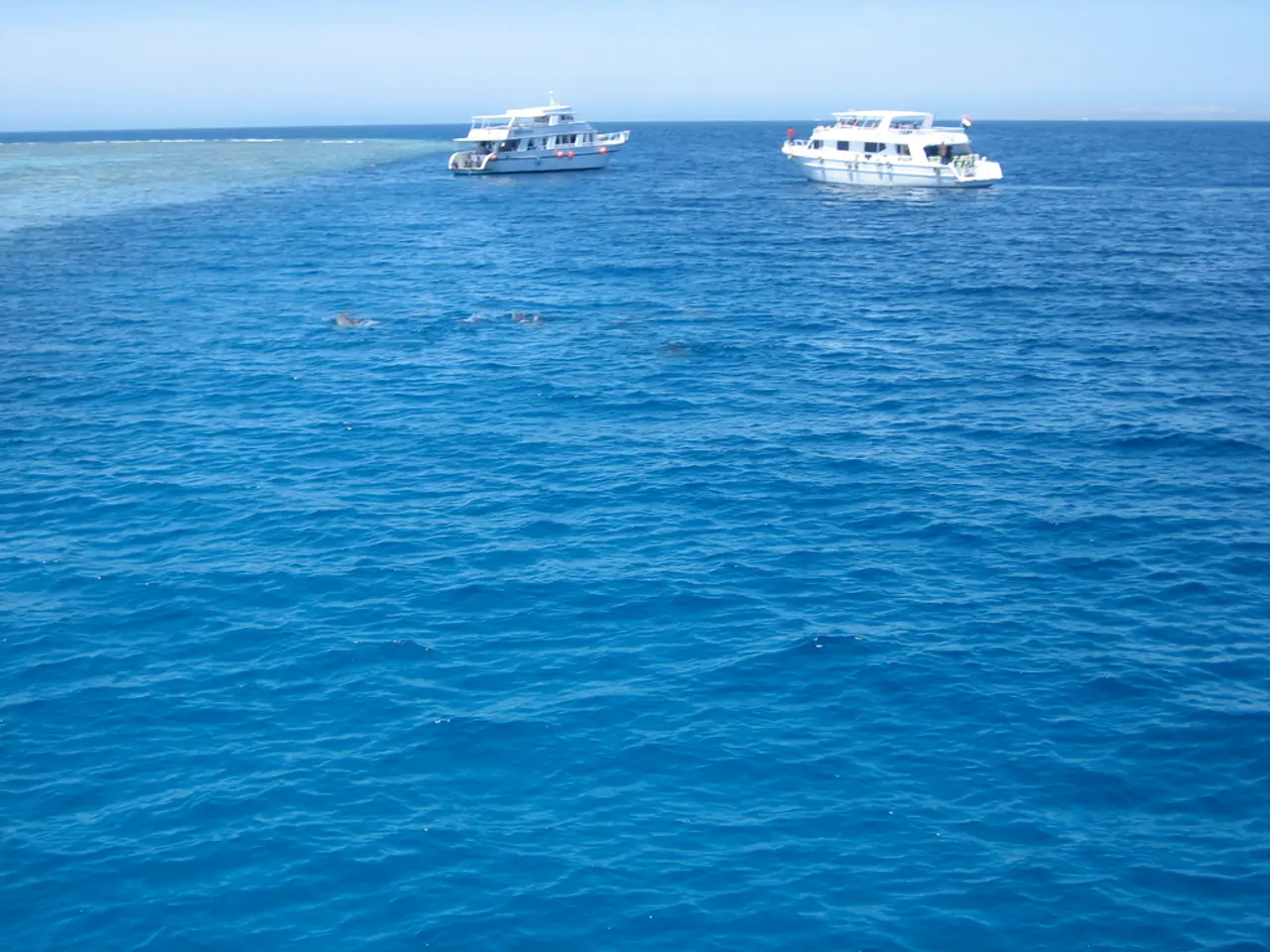China Deploys Aircraft Carriers in the Pacific, Demonstrating Capability to Challenge US Naval Power, According to Expert, as Naval Capabilities Between Two Countries Reportedly Narrowing
In a significant move that has shifted regional naval dynamics, China's two operational aircraft carriers, the Liaoning and Shandong, were deployed together in the Western Pacific for the first time in mid-2025. This historic event marked China's expanded operational reach beyond the First and Second Island Chains.
The simultaneous dual carrier deployment established new milestones in China’s blue-water naval capabilities. The carriers underwent extended durations of carrier operations far from mainland waters and complex integrated combat training exercises, including air defense, missile interception, and anti-submarine warfare.
This development signifies a significant leap for the People’s Liberation Army Navy (PLAN), indicating enhanced warfighting sophistication, operational endurance, and naval aviation power projection within the Indo-Pacific. The advancements challenge the long-established U.S. naval dominance, particularly in areas critical for forward military presence and power projection like the Western Pacific.
China's growing carrier fleet, projected to expand to six supercarriers by the 2030s, aims at sustaining a continuous aircraft carrier presence in the Indo-Pacific, further increasing China’s strategic flexibility and ability to influence potential regional conflicts. This expansion may necessitate a recalibration of military posture by the U.S. and regional allies to maintain freedom of navigation in areas crucial for global commerce and U.S. force mobility.
Meanwhile, Japan's naval capacity is growing steadily to support the US alliance and prepare for a potentially uncertain future. The Japan Maritime Self-Defence Force (JMSDF) is described as a world-class navy by Zachary Abuza, professor of Southeast Asia studies and security. Japan is working on building trust with allies and has been investing in civil infrastructure and maritime domain awareness initiatives in Southeast Asia.
Japan is watching China's naval build-up with concern. The country aims to check China's growing power through a Japanese presence and building partnerships with other regional players. Japan's ambassador to Malaysia stated that Japan is strengthening its defense capabilities to take primary responsibility for dealing with threats.
The deployment of China's aircraft carriers also raises concerns about the potential for an accident resulting from Chinese assertiveness in the South China Sea, as expressed by Ralph Cossa, chairman of the Honolulu-based Pacific Forum research institute. Do Thanh Hai, deputy director-general at Vietnam's East Sea Institute Diplomatic Academy, stated that any disruption in the South China Sea will affect all parties involved.
Moscow and Beijing have been reinforcing their military partnership in recent years, which could potentially impact the regional balance of power. However, Geng Shuang, charge d'affaires of China's permanent mission to the United Nations, stated that China is committed to addressing conflicting claims in the South China Sea through peaceful dialogue.
The Fujian aircraft carrier, currently undergoing sea trials, is expected to enter service later this year, poising China to enter the "three-aircraft-carrier era." Japan's submarine force is exceptional, and it is building up its capabilities, including more high-end antiship missiles.
In response to these developments, allied states and the U.S. have been enhancing multilateral naval exercises and presence, as noted in multinational drill participation and regional exercises involving carriers from the U.S., Japan, Australia, and European partners. Japan has deployed two naval fleets this year, with the first fleet docking in 12 countries and the second ongoing until November, visiting 23 countries.
In summary, the dual carrier deployment marks China’s operational leap from near-shore defense to blue-water naval competition, enhances China’s power projection in a region long dominated by the U.S. Navy, challenges U.S. freedom of navigation, and requires strategic adjustments by the U.S. and regional allies. It accelerates China’s trajectory toward a large carrier fleet capable of sustained multi-theater operations in the Indo-Pacific, embodying China’s ambition for regional maritime dominance and forecasting a more contested strategic environment around key sea lanes critical for international trade and military access.
[1] https://www.reuters.com/world/china/china-sends-aircraft-carriers-into-pacific-together-first-time-2021-06-18/ [2] https://www.usni.org/news/china-to-enter-three-aircraft-carrier-era-with-commissioning-of-fujian [3] https://www.scmp.com/news/china/diplomacy/article/3123269/us-japan-australia-hold-joint-naval-drills-south-china-sea [4] https://www.washingtonpost.com/world/asia_pacific/chinas-carrier-deployment-in-pacific-marks-a-shift-in-regional-naval-dynamics/2021/06/18/a8b892e0-14d1-11eb-911b-6a1a1a399671_story.html [5] https://www.nytimes.com/2021/06/18/world/asia/china-aircraft-carrier-pacific.html
- The simultaneous deployment of China's aircraft carriers, in war-and-conflicts-prone regions like the Western Pacific, has escalated political tensions, potentially disrupting the established general-news narrative of U.S. naval dominance.
- As China's carrier fleet continues to expand, envisaged to reach six supercarriers by the 2030s, it could lead to an environmental impact, due to the increased demand for resources necessary for maintaining and operating such vessels, causing concerns about sustainability.
- Amidst the burgeoning rivalry in war-and-conflicts hotspots like the South China Sea, alliances between nations such as Moscow and Beijing could potentially stir up further conflict, triggering a ripple effect on regional balance of powers and potential political instability.








